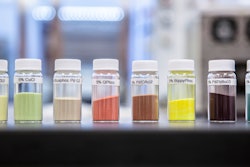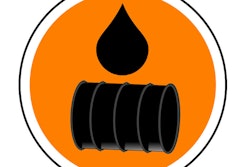Carnegie Mellon University's Engineering Professors and Ph.D. students refined a process that could soon help provide clean water to many in water-scarce regions.
The process, created by former student Stephanie Velegol, uses sand and plant materials readily available in many developing nations to create a cheap and effective water filtration medium, termed "f-sand."
"F-sand" uses proteins from the Moringa oleifera plant, a tree native to India that grows well in tropical and subtropical climates. The tree is cultivated for food and natural oils, and the seeds are already used for a type of rudimentary water purification. However, this traditional means of purification leaves behind high amounts of dissolved organic carbon (DOC) from the seeds, allowing bacteria to regrow after just 24 hours, leaving only a short window in which the water is drinkable.
Velegol, who is now a professor of chemical engineering at Penn State University, had the idea to combine this method of water purification with sand filtration methods common in developing areas. To create f-sand, she extracted the seed proteins and adhered them to the surface of silica particles, the principle component of sand.
F-sand both kills microorganisms and reduces turbidity, adhering to particulate and organic matter. These unwanted contaminants and DOC can then be washed out, leaving the water clean for longer, and the f-sand ready for reuse.
While the basic process was proven and effective, there were still many questions surrounding f-sand's creation and use--questions that Carnegie Mellon University's Biomedical Engineering and Chemical Engineering Professors Bob Tilton and Todd Przybycien resolved to answer.
Tilton and Pryzbycien theorized that isolating certain proteins from the M. oleifera, a process known as fractionation, would increase f-sand's effectiveness. However, through the course of testing, Tilton and Przybycien found that this was not the case. Fractionating the proteins had little discernible effect on the proteins' ability to adsorb to the silica particles, meaning this step was unnecessary to the f-sand creation process.
Tilton and Pryzbycien were also interested to know if the fatty acids found in M. oleifera seeds had an effect on the protein absorption process. M. oleifera is cultivated currently is for the fatty acids and oils found in the seeds, which are extracted and sold commercially. They found that much like fractionation, removing the fatty acids had little effect on the ability of the proteins to adsorb. This finding has beneficial implications for those wishing to implement this process in developing regions, as they can remove and sell the commercially valuable oil, and still be able to extract the proteins from the remaining seeds for water filtration.
Another parameter of the f-sand manufacturing process that Tilton and Przybycien tested was the concentration of seed proteins needed to create an effective product. The key to achieving the proper concentration is ensuring that there are enough positively charged proteins to overcome the negative charge of the silica particles to which they are attached, creating a net positive charge. This positive charge is crucial to attract the negatively charged organic matter, particulates, and microbes contaminating the water.
"There's kind of a sweet spot in the middle," says Tilton, "and it lies in the details of how the different proteins in these seed protein mixtures compete with each other for adsorption to the surface, which tended to broaden that sweet spot."
This broad range of concentrations means that not only can water treatment processes be created at relatively low concentrations, thereby conserving materials, but that there is little risk of accidentally causing water contamination by overshooting the concentration. In areas where exact measurements may be difficult to make, this is crucial.
Tilton and Pryzbycien also looked at water hardness--the amount of dissolved minerals in the water--to determine what effect the water conditions would have on the filtration process. They found that proteins were able to adsorb well to the silica particles, and to coagulate suspended contaminants, in both soft and hard water conditions. This means that the process could potentially be viable across a wide array of regions, regardless of water hardness.
Overall, the conclusions that Tilton, Przybycien, and their fellow authors were able to reach have major benefits for those in developing countries looking for a cheap and easily accessible form of water purification. They've shown that the f-sand manufacturing process displays a high degree of flexibility, as it is able to work at a range of water conditions and protein concentrations without requiring the presence of fatty acids or a need for fractionation.
"It's an area where complexity could lead to failure--the more complex it is, the more ways something could go wrong," says Tilton. "I think the bottom line is that this supports the idea that the simpler technology might be the better one."






















